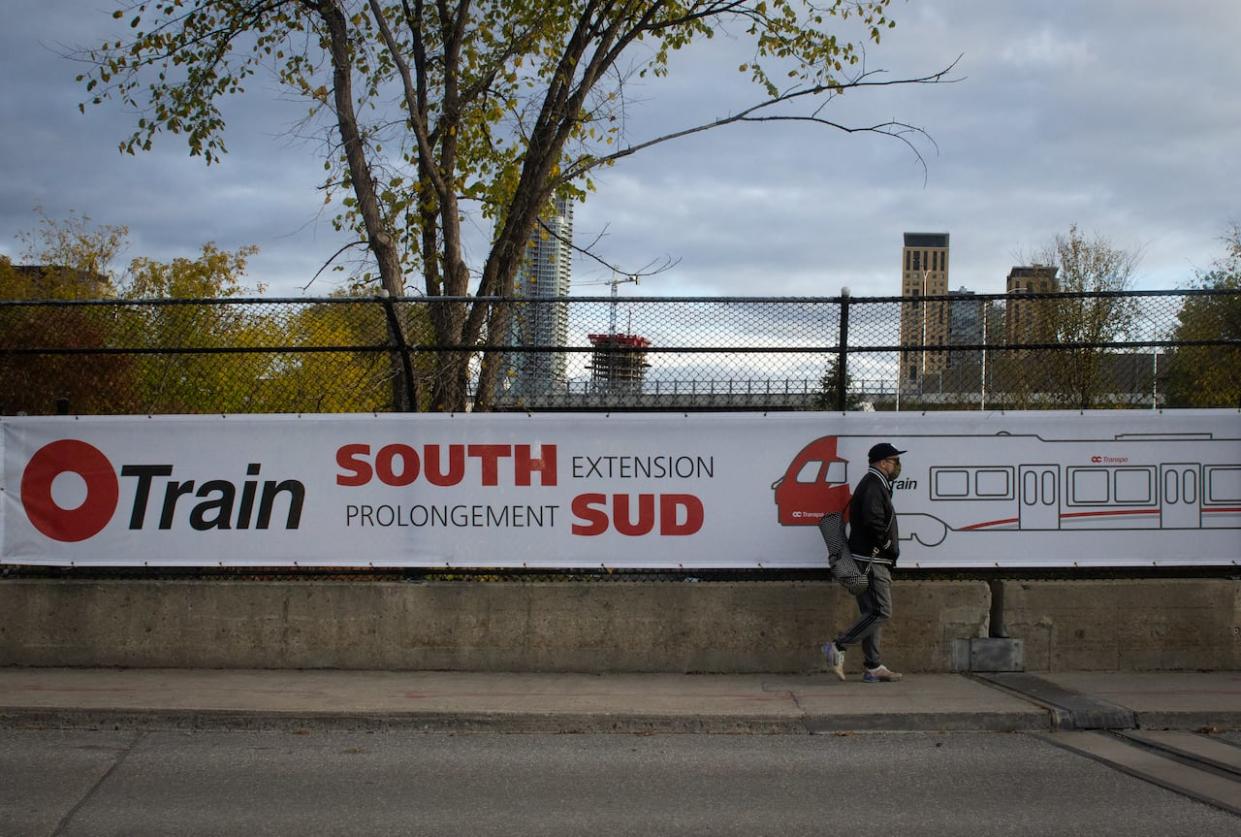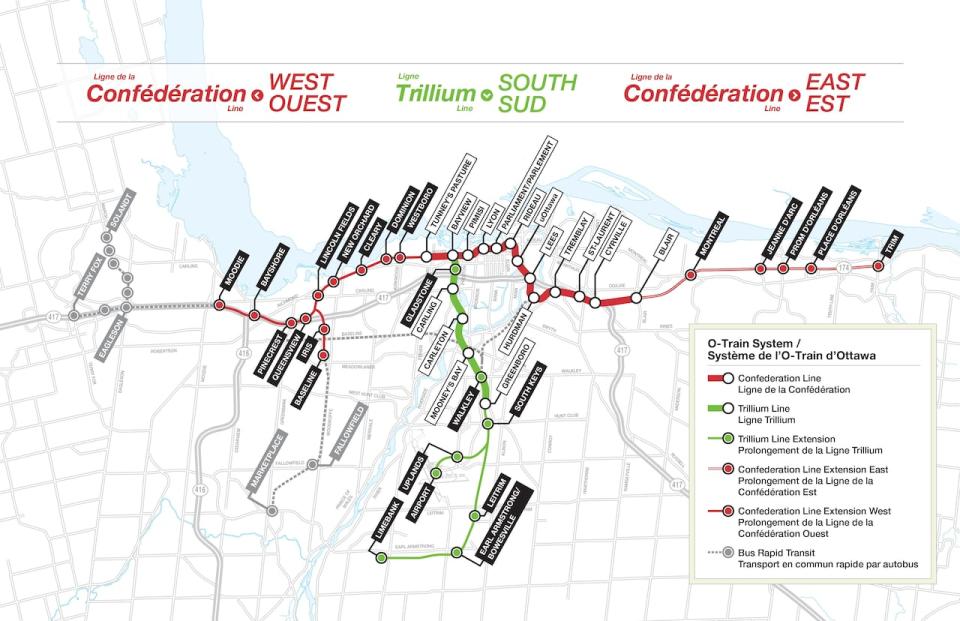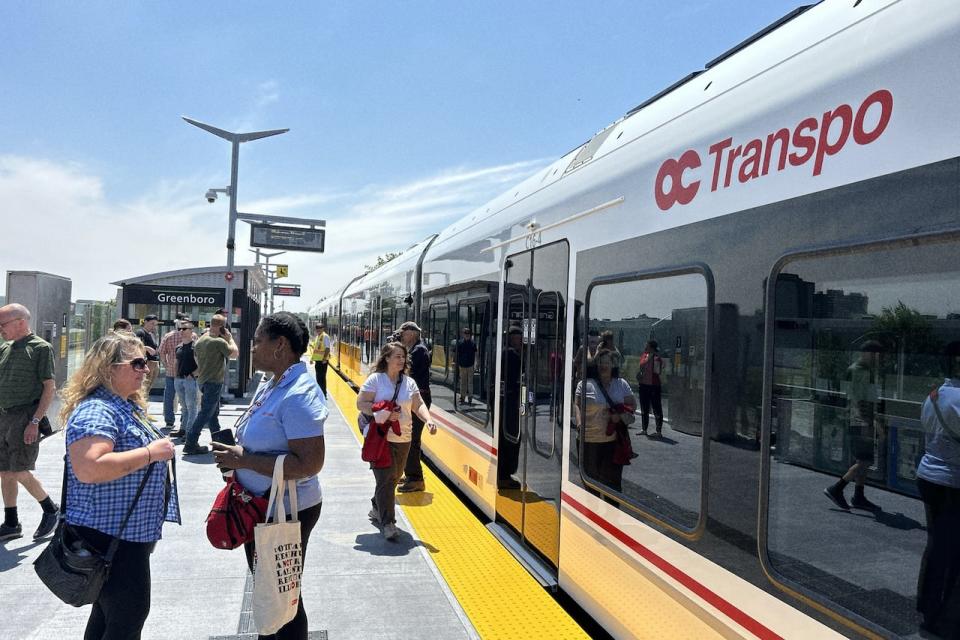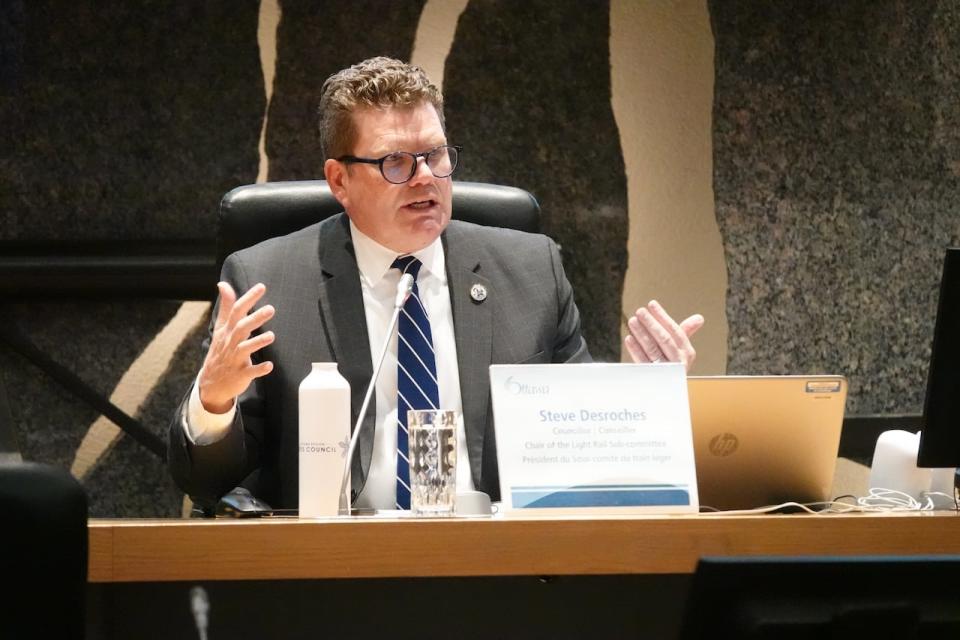Fuel, maintenance costs driving up price of running Trillium Line

OC Transpo expects to pay $3.5 million per month to operate the Trillium Line once the new extension of the north-south rail corridor is running again, according to an email to councillors obtained by CBC.
That includes $2.1 million the city will pay to TransitNext, the project-specific group run by SNC-Lavalin which was chosen to build and maintain it.
The projections come after an updated long-term financial plan for the transportation system suggested that runningthe Trillium and Confederation lines costs a lot more than OC Transpo expected.
That reality — combined with the prediction that ridership will not rebound to pre-pandemic levels until 2030 — prompted staff to suggest the city will need to consider increasing fares, expanding transit levies and delaying the Stage 3 expansion to Barrhaven, Kanata and Stittsville.
Staff mapped out exactly how much rail will cost once both the Trillium Line and Stage 2's east-west expansion are open.
They peg operating costs for 2027 at over $210 million: a $45 million increase from pre-pandemic projections.

A northern portion of the green Trillium Line opened in 2011, but closed in 2020 for Stage 2 construction. Staff have said it should be online by the end of the year. (City of Ottawa)
"The increase in rail operating cost estimates are primarily due to higher support costs required based on Stage 1 experience," deputy treasurer Isabelle Jasmin told councillors last week.
That included the hiring of a litany of consultants to work on unexpected problems.
How do costs compare to the original O-Train?
The $3.5 million monthly operating costs are a far cry from what the city spent on the line before its 2020 closure — but the system itself will look dramatically different.
In 2019, its last full year of service, operating costs totalled $8.5 million, or roughly $708,000 per month.
At that time, it consisted of eight kilometres of single-track rail servicing five stations and was operated by the city, instead of through a public-private partnership.
Stage 2 lengthens the line by 12 kilometres and adds a new four-kilometre line that links to the Ottawa International Airport.
Unlike the Confederation Line, Trillium trains run on diesel (and aren't technically light rail).
Jasmin noted the increase in diesel fuel cost, which also accounts for additional litres per kilometre needed for larger trains.

People in Ottawa eager for the delayed Trillium opening got a chance to see the new diesel trains this summer. (Guy Quenneville/CBC)
Maintenance costs dictated by contract
Troy Charter, the director of rail operations, emailed the new monthly projections to members of the light rail subcommittee on Monday, noting that maintenance costs are "highly variable" and operating costs include "staff, energy, and facility costs."
Similar maintenance payments to Rideau Transit Group, the consortium managing the Confederation Line, are $4 million to $5 million per month.
But if service needs laid out in the city's project agreement are not met, it makes deductions — and it has.
For instance, transit general manager Renée Amilcar said the city will refuse to pay any money for July when a bearing issue caused a system-wide shutdown.
"Ottawa has signed a public-private partnership and [with] those operational costs, the big question there is, are we getting value for money?" said Capital Coun. Shawn Menard, who requested the monthly data at a recent committee meeting.
"Certainly, I'd say on [the Confederation Line], we have not received value for the $4 to $5 million that we pay per month. And this is something that we need to look out for in the future."
Menard said he's hopeful that city staff now seem committed to providing more financial transparency, including month-by-month breakdowns of these operating costs.

Coun. Shawn Menard, seen here in March 2023, says it's important for residents to know they are getting value for money with the transit system. (Kate Porter/CBC)
Financial pressures not unique to Ottawa
Coun. Steve Desroches, who chairs the light rail subcommittee, said the projected monthly costs are "one piece of a bigger puzzle in terms of the cost of a transit system."
"I wasn't surprised that these capital and operating projects, especially large ones, are going through the same pressures that everyone is going through in terms of inflationary costs and high interest rates," he said.
But he said the long-term financial plan's overall shift toward being unaffordable is sobering: "a grim outlook" that is "not unique to the City of Ottawa."

Coun. Steve Desroches, chair of the light rail subcommittee, says the sort of rising costs placing pressure on OC Transpo are common. (Giacomo Panico/CBC)
As a councillor for suburban Riverside South-Findlay Creek, Desroches said he's noticed park-and-rides once "bursting at the seams" still aren't filling up.
Rebuilding trust will mean improving reliability, he said, but a larger plan to boost densification and increase housing near stations will go a long way to increasing ridership and combating the shift toward working from home.
The Trillium Line is expected to open by the end of the year — well over a year behind schedule. The light rail subcommittee will get an update on Friday about what still needs to happen before launch.


